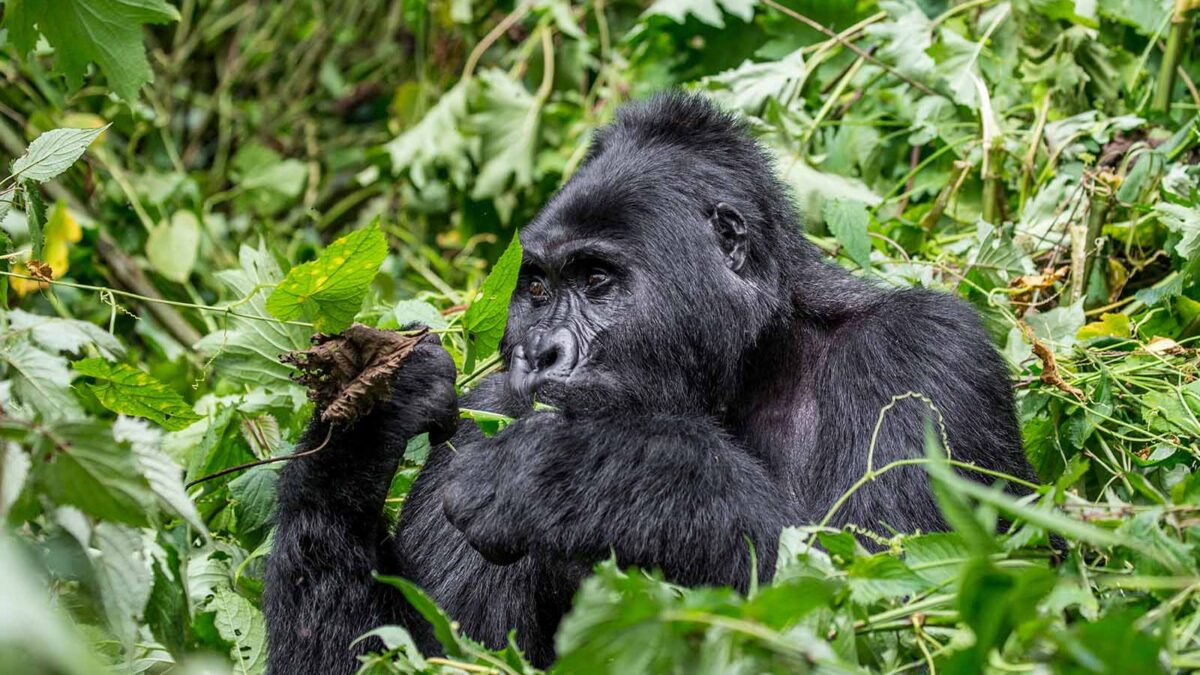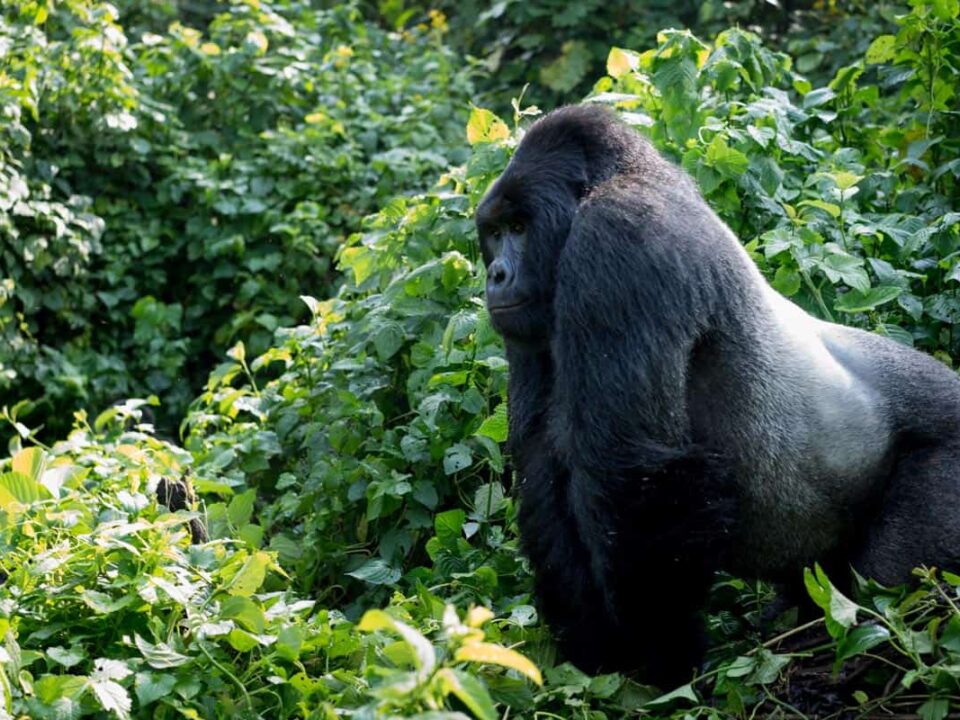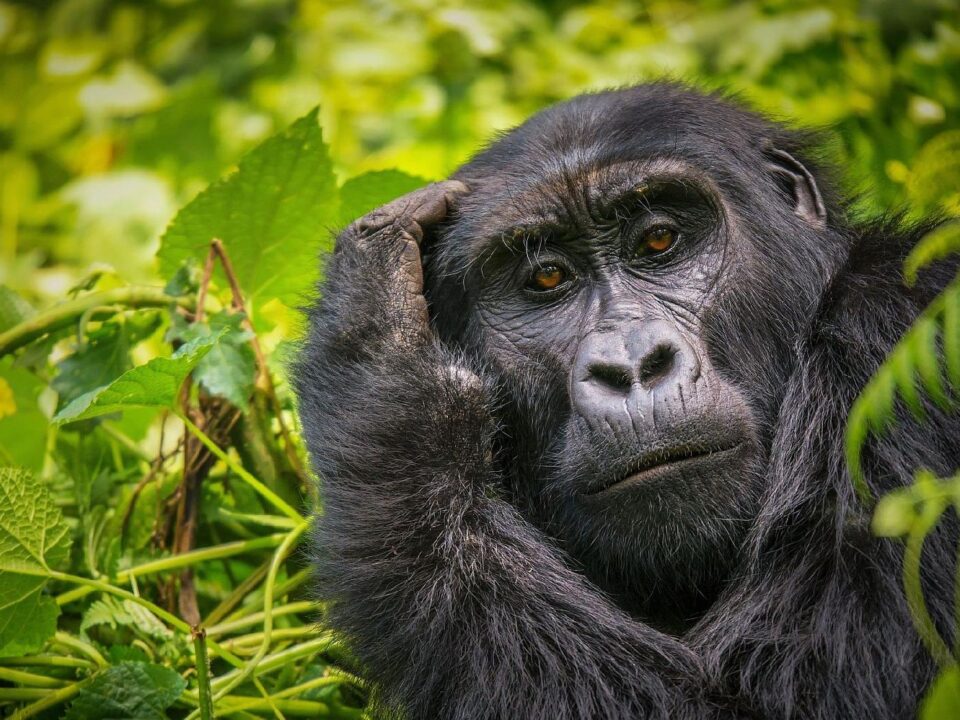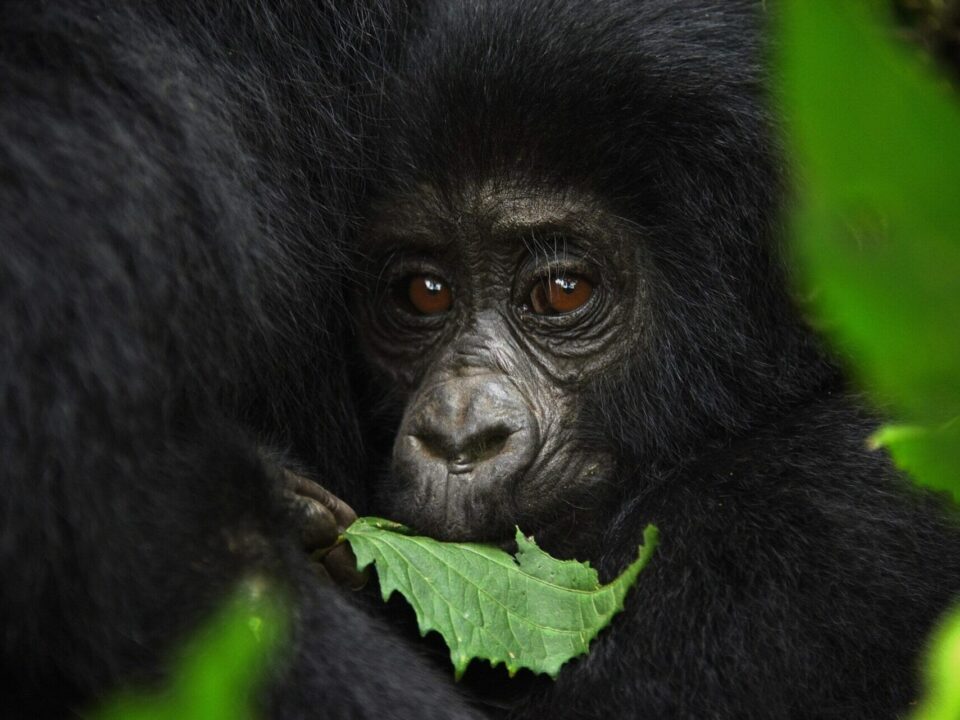
Cost of East African Resident Gorilla Permit
January 9, 2023
Cheapest way to see Mountain Gorillas in Uganda
January 10, 2023As a tourist, it is natural to worry about the likelihood of encountering mountain gorillas during a trek. This concern is especially warranted given the expense associated with this activity. While it is true that nothing in nature is guaranteed, the probability of seeing gorillas on a trek is actually quite high. This is due to a number of factors, which will be discussed later.
Mountain gorillas, the largest of all ape species, can only be found in the countries of Uganda, Rwanda, and the Democratic Republic of Congo. These majestic creatures inhabit the secluded regions of the Virunga massif and Bwindi impenetrable forest. The rarity and endangered status of gorillas, combined with the excitement of tracking and observing them in their natural habitat, make gorilla trekking a truly unforgettable experience.
In Uganda, they can be spotted in Bwindi Impenetrable National Park and Mgahinga Gorilla National Park. In Rwanda, the primates can be found in Volcanoes National Park. The mountain gorillas of the DRC reside in Virunga National Park. It’s important to note that Uganda is home to 50% of the mountain gorilla population worldwide.
Chance of seeing Mountain Gorillas in Uganda, Rwanda and DR. Congo
The chances of seeing mountain gorillas during a trek are quite high, at 98%, in any of the four national parks. While it is not possible to guarantee a sighting due to the unpredictable nature of wildlife, it is virtually certain that those who have purchased a permit will see the gorillas. It is worth noting that the likelihood of a successful gorilla sighting is very high for those with a permit.
Why is the Probability of Observing Gorillas So High?
Gorilla habituation is the process of making wild gorillas accustomed to the presence of humans. By nature, gorillas are not used to human presence, so a team of researchers and trackers must first identify a suitable wild gorilla group and start building their trust. The process of building trust and getting the group used to human presence is known as gorilla habituation, and it can take up to 3 years to complete. Once the process is complete, tourists can visit the group and observe them for an hour, during which time they can take photos and videos. Tourists are only allowed to visit habituated gorilla groups, which means that the gorillas are not frightened by human presence and do not flee or charge at tourists. This allows tourists to have a safe and enjoyable experience while observing the gorillas in their natural habitat.
An advance team of trackers helps to increase the chances of a successful gorilla sighting. Mountain gorillas can be quite mobile and may move deep into the forest to feed, making it difficult for tourists to locate them. To solve this problem, park authorities send an advance team of trackers to locate the gorillas before daylight. These expert animal trackers use signals such as poop or abandoned nests to determine the gorillas’ location, and then guide the team of tourists to the gorillas using radio calls or GPS tracking tools. These behind-the-scenes efforts by the advance tracking team significantly increase the likelihood of seeing mountain gorillas on a trek.
The allocation of gorilla groups is carefully planned to ensure that all travelers have the opportunity to see the gorillas. Gorilla families live in different parts of the forest, with some groups living in more mountainous or heavily forested areas, making the trek more challenging. To accommodate the physical abilities of all travelers, those who are fit are typically assigned to groups living further away from the park offices, while those who are elderly, have health conditions, or are deemed unfit are assigned to groups living closer to the starting point. During the early morning briefing, the allocation of gorilla groups is done in such a way that everyone is able to see the gorillas, even those who may have difficulty walking with the assistance of porters and sedan chairs.
Reasons Why a Gorilla Sighting May Not Occur
It is highly unlikely that a gorilla sighting will not occur, as park rangers can simply take visitors to another known group if the assigned group has wandered deep into the forest. However, it is possible that the activity may be cancelled due to unforeseen natural disasters, though this is rare. Gorilla trekking takes place every day of the year and does not stop for holidays or inclement weather.
It is important to note that in some cases, the presence of militias or rebels in the area can pose a threat to tourists and may result in the cancellation of gorilla trekking activities. In the past, rebel groups have been attracted to the dense forests in gorilla parks, but they have been permanently removed from Uganda and Rwanda. The government of the Democratic Republic of Congo and the management of Virunga National Park have worked to remove rebels from the area by deploying a team of rangers. Tourists will not be allowed inside the park if rebels or unfamiliar individuals are sighted near the park by park scouts.
To protect the health of the gorillas, it is important to not participate in gorilla trekking if you have any infectious or airborne disease. Even minor conditions such as the flu or a cough can potentially make an entire group of gorillas very sick or cause their death. If park authorities become aware of any illness that you may be experiencing, they will likely request that you postpone your trek until you have fully recovered. While a rescheduling of the activity is typically done at no additional cost, it may still cause inconvenience, particularly if you need to adjust your travel plans.
The recent COVID-19 pandemic resulted in the temporary closure of all national parks, including those that are home to mountain gorillas. After a period of only three months, the demand to see these primates remained high. When the parks reopened, travelers were required to follow new standard operating procedures to prevent the spread of COVID-19, including wearing masks and maintaining physical distance.




